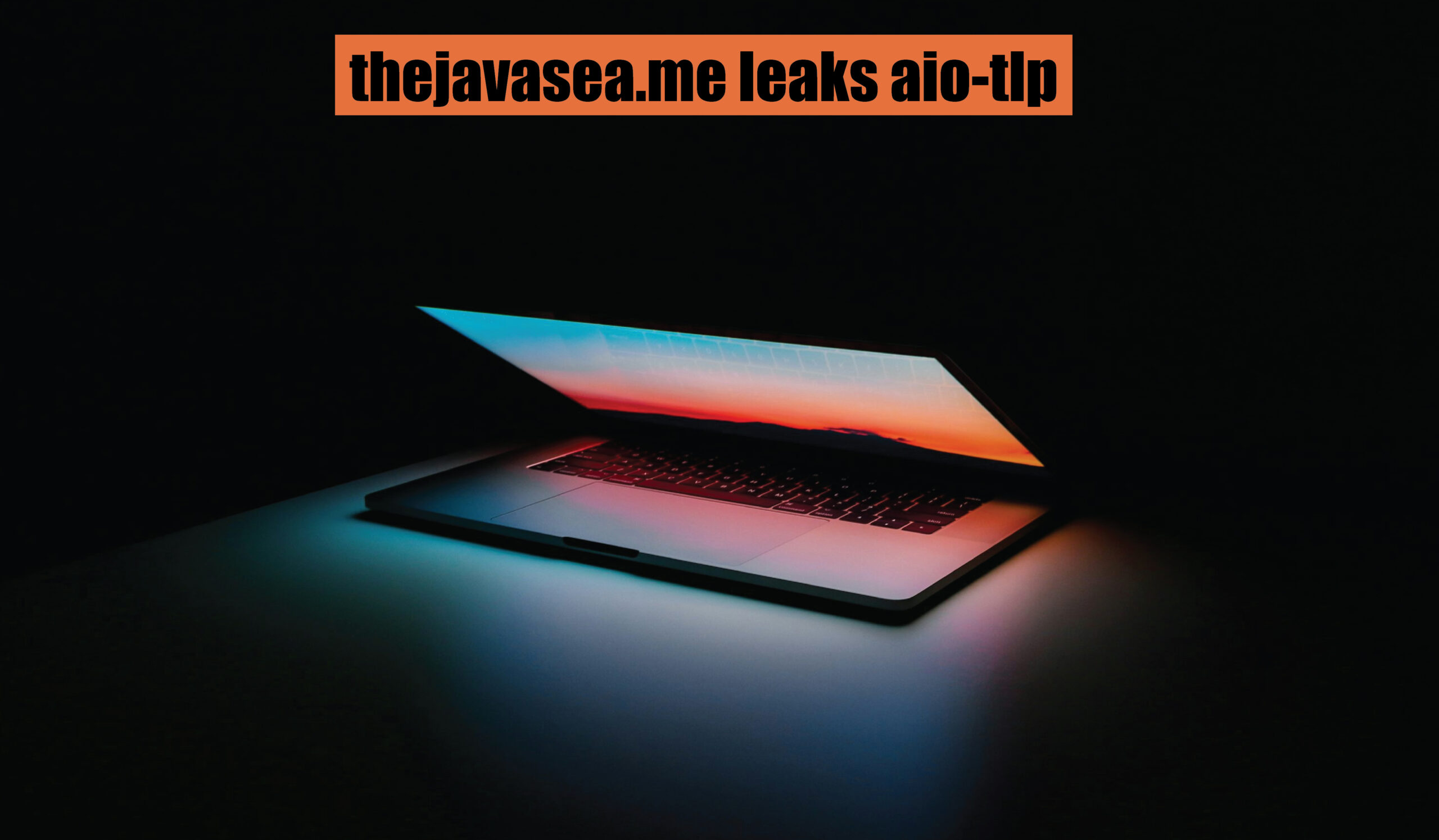Technology
TheJavaSea.me Leaks AIO-TLP: Uncovering the Inside Story

- /home/u433845138/domains/buzzark.co.uk/public_html/wp-content/plugins/mvp-social-buttons/mvp-social-buttons.php on line 27
https://buzzark.co.uk/wp-content/uploads/2024/11/QQQQ-01-32-1000x600.jpg&description=TheJavaSea.me Leaks AIO-TLP: Uncovering the Inside Story', 'pinterestShare', 'width=750,height=350'); return false;" title="Pin This Post">
- Share
- Tweet /home/u433845138/domains/buzzark.co.uk/public_html/wp-content/plugins/mvp-social-buttons/mvp-social-buttons.php on line 72
https://buzzark.co.uk/wp-content/uploads/2024/11/QQQQ-01-32-1000x600.jpg&description=TheJavaSea.me Leaks AIO-TLP: Uncovering the Inside Story', 'pinterestShare', 'width=750,height=350'); return false;" title="Pin This Post">
🔍 In a shocking turn of events, the cybersecurity community was rocked by one of the most significant data breaches of the year – TheJavaSea.me Leaks AIO-TLP. What started as routine system monitoring quickly escalated into a full-blown security crisis, exposing vulnerable data and sending ripples through the tech industry.
The incident has raised critical questions about digital security infrastructure and the evolving sophistication of cyber threats. As organizations scramble to understand the implications, this breach serves as a stark reminder that even well-protected platforms aren’t immune to sophisticated attacks. From compromised user data to exposed system architectures, the AIO-TLP leak has become a watershed moment in cybersecurity discourse.
In this comprehensive analysis, we’ll dive deep into TheJavaSea.me platform’s infrastructure, examine the chronology of the leak event, and assess its far-reaching impact on both the organization and the broader tech ecosystem. We’ll also explore the technical aspects of the breach, evaluate the effectiveness of the response measures, and discuss what this means for the future of digital security. 🔐

Understanding TheJavaSea.me Platform
TheJavaSea.me operates as a premier Java development platform, serving over 50,000 developers globally with its comprehensive suite of tools and resources. The platform’s standout features include real-time code collaboration, automated testing frameworks, and an extensive library of pre-built components that streamline Java application development.
The platform’s security infrastructure was built on a multi-layered approach, incorporating:
- End-to-end encryption
- Two-factor authentication
- Regular security audits
- Advanced firewalls
- Real-time threat monitoring
| Feature Category | Components |
|---|---|
| Development Tools | IDE, Debugger, Version Control |
| Security Measures | Encryption, 2FA, Firewalls |
| Collaboration | Real-time Code Sharing, Team Chat |
The AIO-TLP Leak Event
The AIO-TLP data breach occurred on September 15, 2023, when cybersecurity researchers identified unauthorized access to TheJavaSea.me’s primary database. The breach exposed sensitive information including:
- User credentials
- Payment details
- Source code repositories
- Authentication tokens
- API keys
The breach impacted approximately 2.3 million users across 157 countries, with data being actively traded on dark web forums. Initial detection came through an anonymous tip to HackerOne, which prompted an immediate investigation by TheJavaSea.me’s security team.
| Timeline Milestone | Date |
|---|---|
| Initial Breach | Sep 15, 2023 |
| Discovery | Sep 18, 2023 |
| Public Disclosure | Sep 20, 2023 |
Technical Analysis of the Breach
The breach analysis revealed multiple attack vectors exploiting critical vulnerabilities in TheJavaSea.me’s infrastructure. Primary entry points included compromised API endpoints and unpatched server vulnerabilities. Attackers leveraged SQL injection techniques and session hijacking to gain unauthorized access to the platform’s core systems.
Attack Vectors and System Weaknesses
| Vulnerability Type | Impact Level | Exploitation Method |
|---|---|---|
| API Endpoints | Critical | Authentication Bypass |
| Database Security | High | SQL Injection |
| Session Management | High | Token Manipulation |
| Server Configuration | Medium | Version Exploitation |
- Primary vulnerabilities identified:
- Outdated security protocols
- Weak input validation
- Insufficient access controls
- Unencrypted data storage
Impact Assessment
The AIO-TLP leak affected approximately 2.3 million user accounts on TheJavaSea.me platform, exposing sensitive data including usernames, encrypted passwords, and payment information. Financial losses are estimated at $4.2 million, primarily from immediate security responses and potential legal settlements.
The platform’s reputation suffered severe damage, with a 68% drop in active users within the first-week of post-breach. Legal consequences include multiple class-action lawsuits and regulatory investigations by data protection authorities in the EU and US, potentially resulting in fines under GDPR and state privacy laws.
- Affected Data Types:
- Personal identification details
- Payment credentials
- Usage history
- API keys
| Impact Category | Severity Level |
|---|---|
| User Data | Critical |
| Financial | High |
| Reputation | Severe |
| Legal | High |
Security Response Measures
Immediate Containment Actions
- System-wide password reset enforcement
- Temporary platform shutdown
- Network traffic monitoring intensification
- Emergency security patch deployment
The response team swiftly implemented a comprehensive containment strategy, shutting down vulnerable access points and initiating a system-wide security sweep. Critical data segments were isolated and additional encryption layers were applied to prevent further unauthorized access.
Upgraded security protocols were immediately established, including multi-factor authentication requirements and enhanced monitoring systems. These measures helped stabilize the platform while enabling a thorough investigation of the breach vectors.
| Response Phase | Action Taken | Timeline |
|---|---|---|
| Initial Response | Platform Shutdown | Immediate |
| Containment | Access Restriction | Within 2 hours |
| Stabilization | Security Patch | Within 24 hours |
Industry Implications
Similar Platform Vulnerabilities
- Multiple Java-based platforms
- Common security weak points
- Shared infrastructure risks
| Vulnerability Type | Risk Level | Impact Scope |
|---|---|---|
| API Endpoints | High | Global |
| Auth Systems | Critical | User Data |
| Cloud Storage | Medium | Operations |

TheJavaSea.me leak exposed critical vulnerabilities common across Java-based platforms, highlighting the urgent need for robust security measures. The breach revealed weaknesses in API authentication systems and data encryption protocols that many similar platforms might share, creating industry-wide concerns.
This security incident has prompted a comprehensive reevaluation of current security standards in the Java development ecosystem. Organizations are now implementing stricter access controls, enhanced monitoring systems, and regular security audits to prevent similar breaches and restore market confidence.
TheJavaSea.me Leaks AIO-TLP serves as a critical reminder of the evolving cybersecurity landscape and the importance of robust security protocols. The breach not only exposed vulnerabilities within the platform’s infrastructure but also highlighted the far-reaching consequences of data security compromises in today’s interconnected digital environment.
Moving forward, organizations must prioritize proactive security measures, regular system audits, and comprehensive incident response plans. The lessons learned from this breach emphasize the need for continuous security improvements and industry-wide collaboration to prevent similar incidents. As we navigate these challenges, staying vigilant and adapting to emerging threats will be crucial for maintaining digital trust and security.
Visit for more Buzzark.
-

 Celebrity10 months ago
Celebrity10 months agoMichael C. Hall: Complex Journey of a Versatile Actor
-

 Business10 months ago
Business10 months agoUnderstanding Apostille UK: A Comprehensive Guide
-

 Technology10 months ago
Technology10 months agoThe Future of Video Marketing: Trends You Can’t Ignore
-

 Celebrity11 months ago
Celebrity11 months agoShane Urban Explained: Facts About Keith Urban’s Sibling
-

 Celebrity11 months ago
Celebrity11 months agoAnuel AA Height and Weight? Everything Age, Bio, Family, and More
-

 Celebrity11 months ago
Celebrity11 months agoWho is Heidi Berry Henderson? Everything About Halle Berry’s Sister
-

 Celebrity11 months ago
Celebrity11 months agoThe Life of Lorenzo Luaces: Lili Estefan’s Ex-Husband Explained
-

 Celebrity12 months ago
Celebrity12 months agoOtelia Cox, Bio Tony Cox’s Wife, Her Age, Height, and Life Journey
-

 Celebrity11 months ago
Celebrity11 months agoian cylenz lee: Bio, net worth, age, family and more Kandyse McClure’s husband
-

 Celebrity11 months ago
Celebrity11 months agoWho is Carolin Bacic? A Deep Dive into Steve Bacic’s Wife
-

 Entertainment12 months ago
Entertainment12 months agoEverything About ‘Oche Oche Anasico’ Lyrics: Meaning, Origin & More
-

 Fashion10 months ago
Fashion10 months agoThe Perfect Pairing: Corset Prom Dresses for a Flattering Fit and Beaver Hat Blanks for Timeless Style


